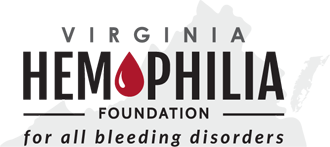During the Summer of 2021, VHF assisted the Virginia Bleeding Disorders Program (VBDP) in conducting a comprehensive evaluation of VBDP and to identify the unmet needs of the community. Go here to read the full report.
One of the main themes to come from the evaluation was that distance to care or travel to HTCs was seen as a barrier to care. This was most notable for patients in Southwest Virginia as well as Hampton Roads (for adult care) and patients in rural areas in general have been identified as an underserved group and further assessment is needed. Non-Virginia HTC providers rate distance to care as the primary reason Virginia residents seek HTC care outside of the Commonwealth.
Based on the findings of the report, several committees were created to address these needs. The Overcoming Distance or Travel Barriers Committee was created and met virtually throughout 2022-2023. The committee determined that utilizing different technologies can be one way to improve access to care. During the COVID pandemic, the medical care model was forced to change. Telehealth became the new normal and now that the pandemic is ending, telehealth looks like it is here to stay. While it is convenient for reducing the travel time, there are still some barriers to reaching all members of the community, but there are also some resources that may be of help.
Access to technology
When utilizing different technologies to improve access to care, it is important to consider what is needed to successfully use these technologies. Factors like limited access to a mobile device or other device that has video-audio abilities, access to WIFI, or digital literacy should be addressed.
Resources:
Affordable Connectivity Program – if you or your child or dependent are enrolled in government programs like Medicaid, SNAP, WIC, or Others, or based on your household income the program can provide:
- Service discount up to $30/month
- Device discount up to $100 for a laptop, tablet, or desktop computer (with a copayment of more than $10 but less than $50)
- Only one monthly service discount and one device discount is allowed per household. Not every internet company offers device discounts.
USAC Lifeline Support is a federal program that lowers the monthly cost of phone or internet service.
- You may be eligible to get Lifeline based on your income or participation in a government assistance program. Learn more about qualifying.
- Go here to download a flyer that takes you through the steps to apply.
Getting help with access:
Even if you might like to try telehealth, you may have trouble accessing online services. The US Department of Health and Human Services has put together a website with resources about telehealth to help families navigate the online healthcare system. Learn more about getting help with access.
For Rural areas, there are additional considerations to think about when working with patients through telehealth. Providing telehealth to Rural patients, it may be combination of video chats, phone calls, and secure messaging, depending on if broadband internet is support in the area. Learn more about how to prepare rural patients for telehealth.
Basics of Telehealth-health literacy FAQ
Go here to learn what you need to know to get quality, convenient medical treatment online.
For your telehealth visit, you will need a device that has video and an internet connection, such as a smartphone, computer, or tablet. Go here for tips to prepare for your appointment.
